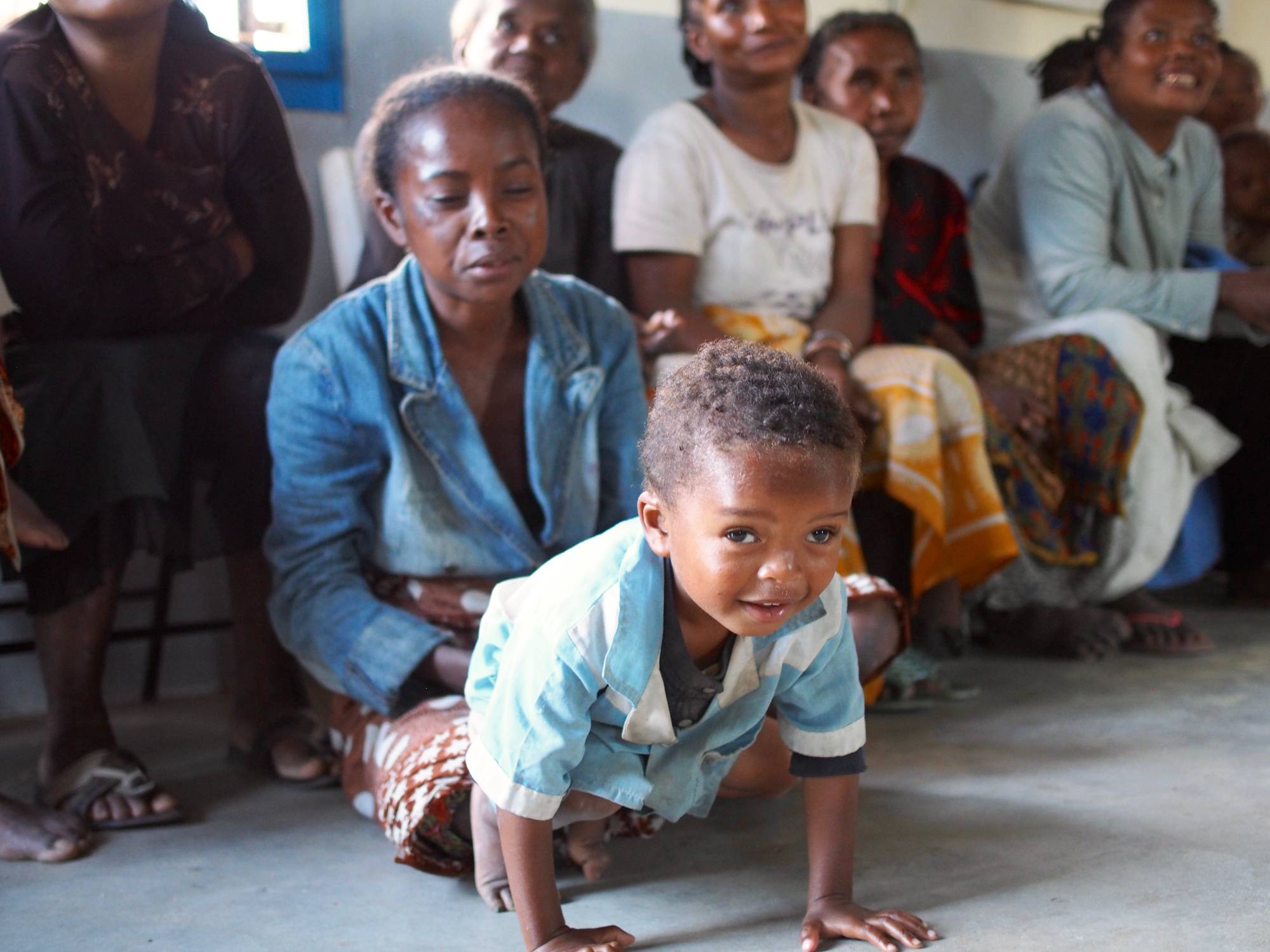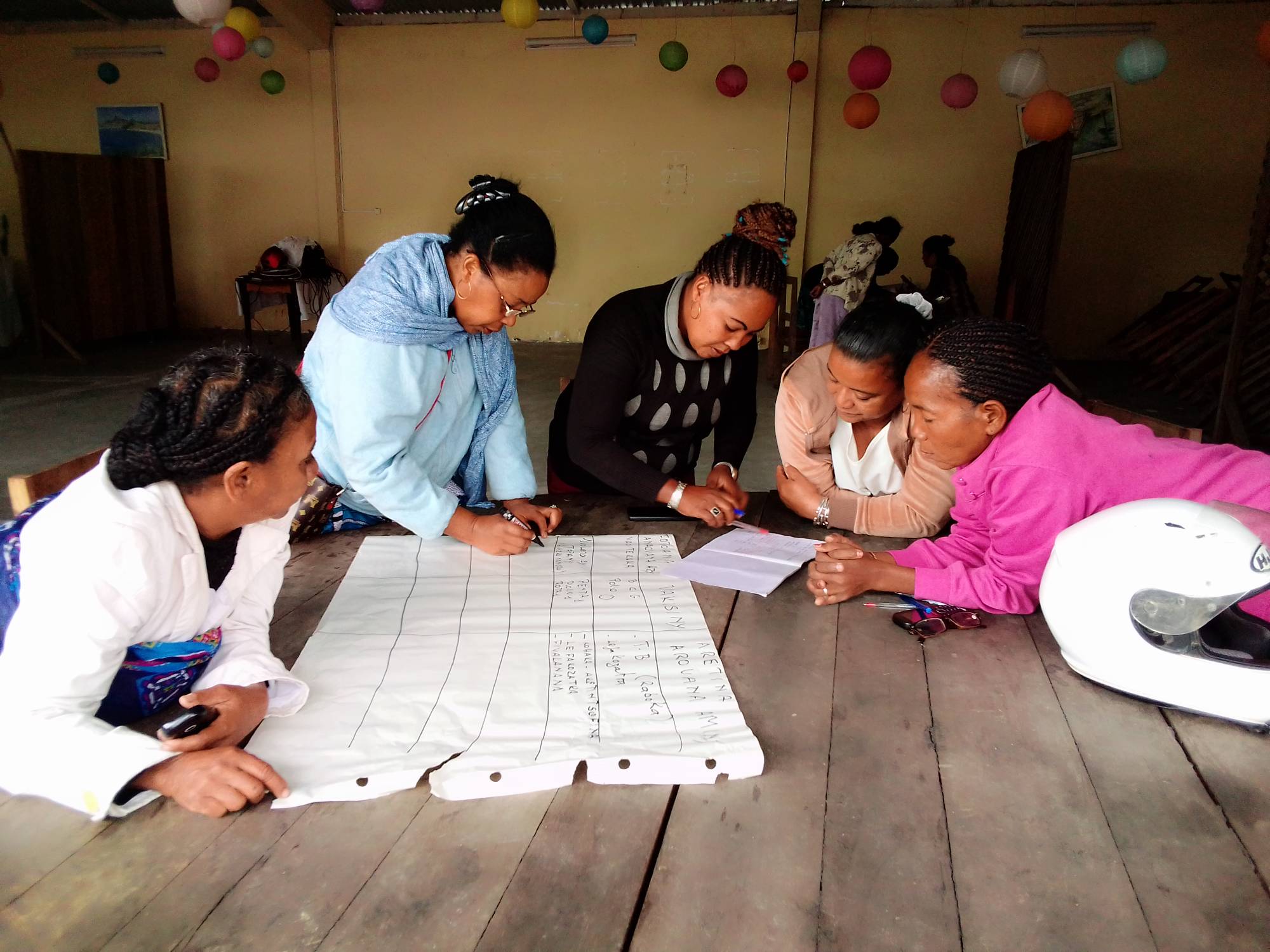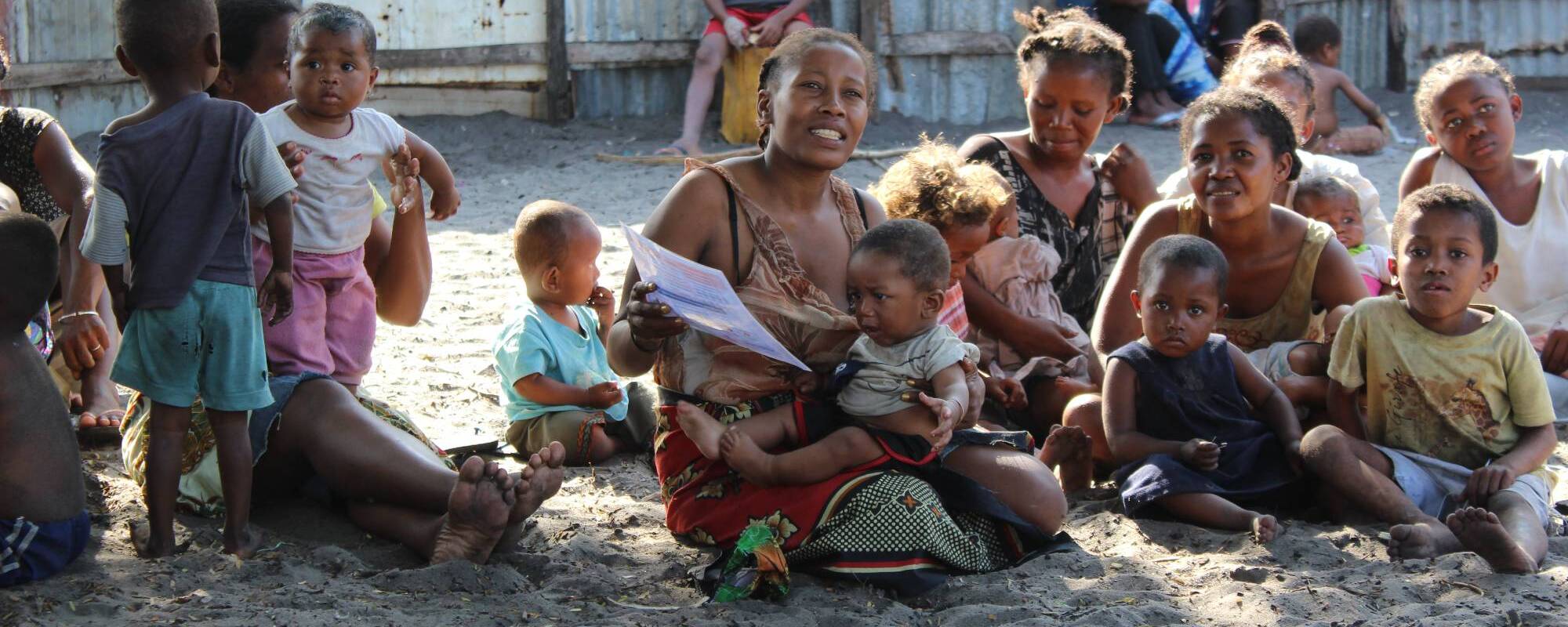Re-Introducing Project Votsira
“ I share the information from the course to my family. For example, give birth in hospital and go immediately to the doctor when the child was sick. Don't wait [until] tomorrow.”
- Mother from Ampotatra in Votsira III (2019)
Although Madagascar has achieved remarkable advances in child survival over the past twenty years, the country’s maternal and child health outcomes are among the poorest in the world.1 Every day, ten women die from complications related to pregnancy and childbirth, and 100 children under five years old die from preventable childhood diseases such as acute respiratory infections, diarrhoea, and malnutrition.2 With over 60% of Malagasy people living more than 5 kilometres from a healthcare centre,3 and over 75% of the population living below the international poverty line,4 the cost of treatment and transportation to healthcare centres can be a considerable barrier to accessing essential healthcare services.5 As a result, only half of all births are attended by a skilled healthcare professional, and informal health services, such as traditional healers, are often used to treat common childhood illnesses, which can be detrimental to maternal and child health.6
These challenges are amplified in the southeast Anosy region of Madagascar, where SEED’s research from 2012, ahead of launching project Votsira, found that knowledge of maternal and child health is low, and health services are often understaffed and poorly equipped.7
Between 2013 and 2019, SEED responded to these challenges through its Votsira project. Through Votsira, which means ‘the state of wellbeing of a new mother and her child’ in Malagasy, SEED worked with community health workers to deliver a maternal and child health education course designed in partnership with the local Ministry of Public Health to mothers and grandmothers in Fort Dauphin, the regional capital of Anosy.
Now, following disruptions due to COVID-19 and lack of funds, SEED is proud to be implementing the fourth phase of Votsira.
This phase will build on the previous rounds of Votsira, which developed the confidence and capacity of over 3,900 caregivers to recognise signs and symptoms of common childhood illnesses and improve health-seeking behaviours. Following the completion of the course in phase 3 of Votsira, mothers were 3.4 times more likely to report that they would seek help from a healthcare professional when their child had a fever, and 96% of caregivers felt confident in their ability to identify signs and symptoms of malaria, diarrhoea, and acute respiratory infections.

“Project Votsira changed their habits; before they give water, herbs for their child [under six months old]. Now they give only breast milk.”
- Community health worker from Votsira III (2019)
Entering its fourth phase, Votsira will reach 2,800 caregivers across Fort Dauphin over two years. So far, the project has been incredibly popular, and community health workers have recruited 1,320 people for the first round of training.
To deliver the maternal and child health course, Votsira IV will adopt a train-the-trainer approach to equip 38 community health workers with the skills and knowledge to provide ongoing maternal and child health education and specialised breastfeeding support to their communities. The first training session (pictured above) was held in early August and provided community health workers with comprehensive knowledge of family planning and maternal and child health.
The 38 community health workers will deliver the maternal and child health course to mothers, grandmothers, fathers, and pregnant women in the upcoming months through community-level education sessions and household visits. In addition, Votsira IV aims to increase the capacity of midwives and health centre staff to deliver high-quality maternal and child health services and enhance collaboration between different maternal and child health actors in the region. Collectively, these activities will drive lasting change by building the knowledge and capacity of health care workers, communities, and families to improve the health outcomes of Malagasy women and children.
References
1 Andrianantoandro VT, Pourette D, Rakotomalala O, Ramaroson HJV, Ratovoson R,
Rakotoarimanana FMJ. Factors influencing maternal healthcare seeking in a highland region of
Madagascar: a mixed methods analysis. BMC Pregnancy Childbirth. 2021;21(1):428.
https://doi.org/10.1186/s12884-021-03930-2
2 USAID. Madagascar Maternal and Child Health Fact Sheet: USAID; 2018. Available from:
https://www.usaid.gov/madagascar/fact-sheets/madagascar-maternal-and-child-health-fact-sheet
3 USAID. Global Health: USAID; 2022. Available from: https://www.usaid.gov/madagascar/global-
health
4 World Bank. The World Bank in Madagascar: World Bank; 2018. Available from:
https://www.worldbank.org/en/country/madagascar/overview
5 Kazel M. Healthcare centres in Madagascar during COVID-19: The Borgen Project; 2020. Available
from: https://borgenproject.org/healthcare-in-madagascar-during-covid-19/
6 John Hopkins University. Madagascar: Strengthening Maternal and Newborn Health (through
MCHIP): John Hopkins University; 2014. Available from: https://hopkinsglobalhealth.org/faculty-
research/project-map/madagascar--strengthening-maternal-and-newborn-health--through-mchip-/
7 Morris J. Assessment of Maternal and Child Health in Fort Dauphin, Madagascar: SEED Madagascar;
2012. Available from: https://madagascar.co.uk/application/files/9215/3364/1400/2011_-_2012_-
_Assessment_of_Maternal_and_Child_Health_in_Fort_Dauphin.pdf
